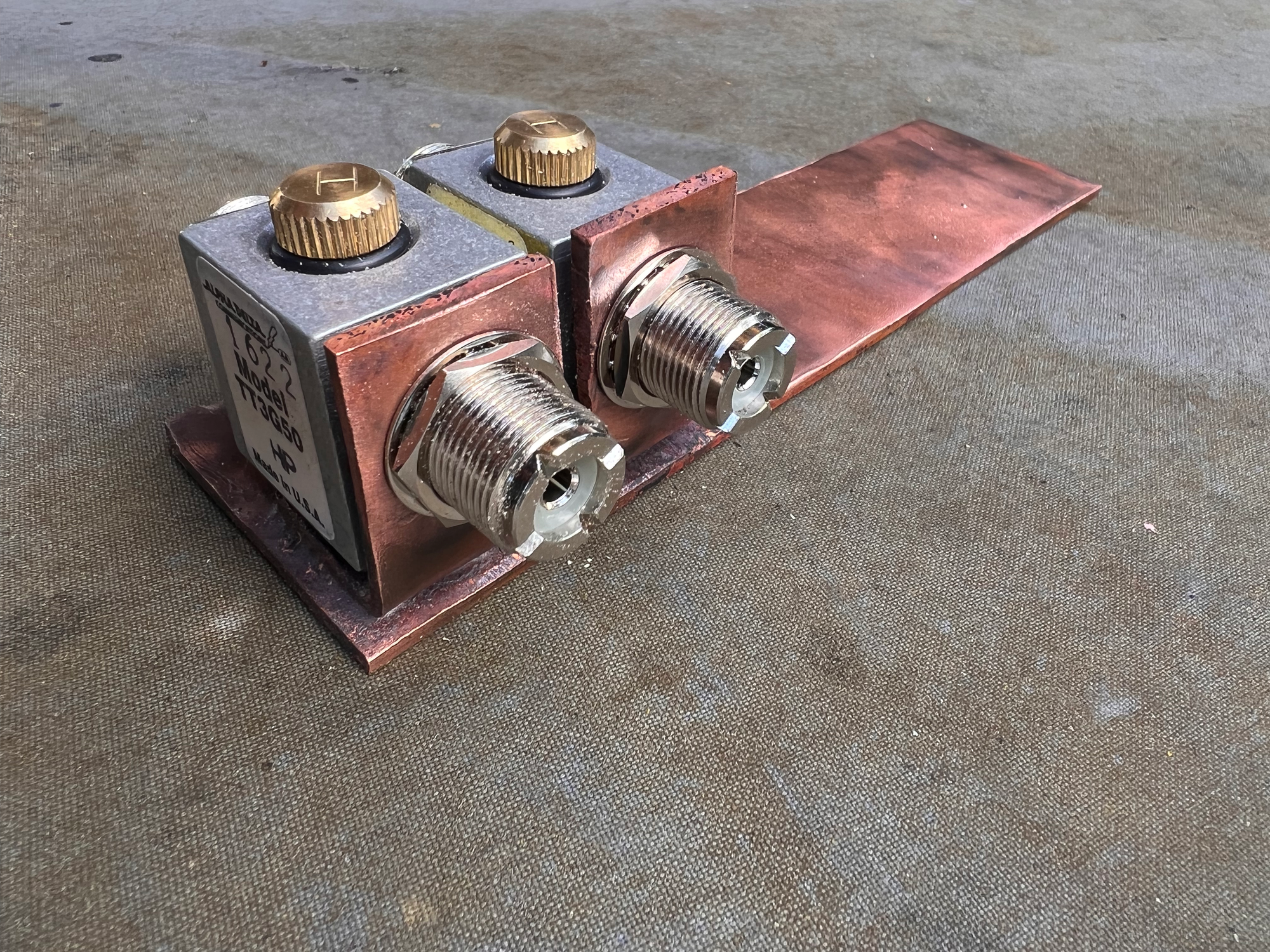Home Antenna Grounding
I recently installed an end-fed wire antenna running from the apex of my garage into a large maple tree in my backyard. I want to get the best performance I can from the antenna and also take the appropriate precautions to operate safely and protect my equipment.

Until recently most of my ham radio activity has been QRP/remote. I have not had an antenna continually installed at my house and have not taken the time to setup a proper ground system. Until recently most of my ham radio activity has been QRP/remote. I have not had an antenna continually installed at my house and have not taken the time to setup a proper ground system. I recently installed an end-fed wire antenna running from the apex of my garage into a large maple tree in my backyard. I want to get the best performance I can from the antenna and also take the appropriate precautions to operate safely and protect my equipment.
There is a lot of information about how to setup a grounding system for radio. Here is a summary of some of the key points I've learned about setting up a ground system:
- Use a single-point ground inside of the home. A sheet of copper (0.5mm thick) screwed into a wooden board will work well for this.
- Electrically bond all "earthed" items outside of the home together using mechanical attachment methods. This system should be bonded to ground rods driven into the ground.
- Use Lightning arrestors on each coax line to shunt high voltages to ground
Parts/Equipment:
- 1ft x 1ft 0.5mm thick copper sheet (for internal "single point" ground)
- 1/8" thick copper sheet – approx 2in x 8in. This was leftover from the loop antenna project.
- Copper braizing rod and torch
- Utility enclosure kit: https://www.dxengineering.com/parts/DXE-UE-2P
- Lightning arrestors: https://www.dxengineering.com/parts/ALF-ATT3G50UBHP. *** See note below!
- Solid-core 6 AWG copper wire from Home Depot
Note: these lightning arrestors are chassis-mount meaning they are grounding through the PL-259 connector and they do not have a threaded hole on the body of the arrestor. You can save some effort by purchasing an alternate arrestor with the threaded hole that can be directly connected to a metal plate with a bolt.
Build
Since my arrestors are chassis-mount I want to connect them to ground plane with a minimal amount of resistance and plenty of current-carrying capacity. I'm using some leftover copper from the loop antenna brackets I recently worked on.
First, cutting a couple of small strips of copper. I used a band saw for this:

I then cut holes into them and added a bend using a vice and hammer:

I drilled some holes and used M3 bolts to hold these brackets onto a 2" wide 1/8" thick sheet of copper ground plane. These bolts helped hold the copper securely as I brazed them into place:

This was my first attempt brazing copper. It took two tries. The first time failed because I didn't get the material hot enough. I had what looked like a "cold solder" joint where the brazing material bonded to the brackets, but didn't adhere to the larger copper sheet. The 2nd time worked great. I found I needed to heat the copper for 4-5 minutes before the brazing rod would flow and wick correctly into all of the pieces. The copper was nearly red hot by the time I started brazing.


Close up of the connection after some cleanup with a wire brush:

Arrestors installed onto bracket after some additional cleanup:

And the whole setup installed in the utility box on the side of the house near my workbench and the electrical panel for the home:

Inside of the house, I have a single point ground installed with my coax selector switches mounted to it:
Next steps:
- Use a 2in strip of copper to connect the interior station ground to the exterior ground. This will have lower inductance and will provide better RF grounding.
- Measure the ground resistance and consider adding additional ground rods.
- Install a 2nd antenna (planned to be a 2m/70cm antenna)
- Cleanup coax routing at the ham radio bench

Results:
Its been nice having an antenna installed at home and its very convenient to not have to run coax out the back door every time I want to run a test. I don't think my end-fed installation is optimal by any stretch, but its a massive improvement over no antenna at all! It will be interesting to compare the results to my loop antenna.
A couple of nights after installing the antenna I saw a lot of activity on both 20m and 40m. Here is a portion of the 20m band that night (2022/05/18).
